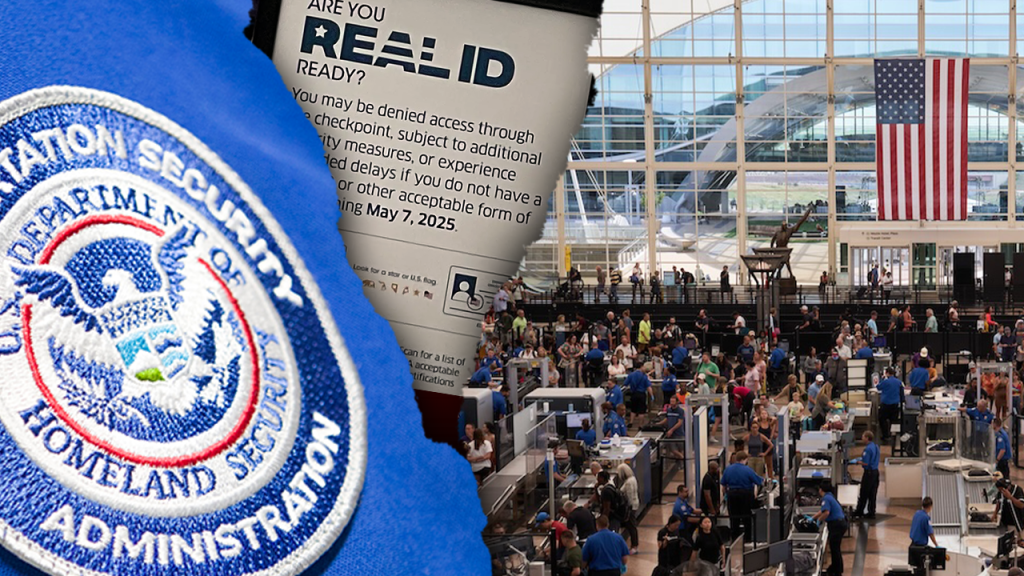As the deadline for compliance with the REAL ID Act approaches, debates regarding its necessity intensify among lawmakers and the general public. House Republican Representative Eric Burlison of Missouri has publicly criticized the measure, deeming it an unnecessary burden for Americans. Implemented as a result of recommendations from the 9/11 Commission, the REAL ID has faced multiple delays since its inception in 2005, leading to long lines and alarmed citizens as the final compliance date of May 7, 2025, approaches.
| Article Subheadings |
|---|
| 1) Overview of REAL ID Legislation and its Implications |
| 2) Representative Burlison’s Critique of the REAL ID |
| 3) The History and Context of REAL ID |
| 4) Current Situation and Public Response |
| 5) What the Future Holds for REAL ID and Travel Regulations |
Overview of REAL ID Legislation and its Implications
The REAL ID Act was established in 2005 in response to the tragic events of September 11, 2001, aimed at enhancing security and preventing fraud in the identification process. The law requires states to comply with stringent federal guidelines regarding the issuance of driver’s licenses and state ID cards. Starting May 7, 2025, individuals will need to present a REAL ID-compliant identification for domestic air travel and access to federal facilities, making it necessary for citizens to ensure their compliance before this deadline. While a U.S. passport remains an acceptable alternative, the urgency has led many to scramble to obtain the necessary ID, causing concerns about accessibility and administrative efficiency.
Representative Burlison’s Critique of the REAL ID
Representative Eric Burlison has voiced strong opposition to the REAL ID requirement, framing it as an unnecessary burden on the American populace. He expressed, “I personally don’t support the REAL ID. I think that it’s unnecessary in keeping us safe.” During an interview, Burlison emphasized his belief that the current identification systems—state IDs and passports—are sufficient for ensuring safety and questioned the rationale behind the additional layer of bureaucracy. He highlighted that the 9/11 terrorists possessed passports, suggesting that merely implementing the REAL ID would not have prevented the attacks. His comments reflect a broader skepticism among conservatives regarding the perceived government overreach into personal lives through identification requirements.
The History and Context of REAL ID
In the years following its enactment, the REAL ID Act faced numerous delays and adjustments, reflecting the complexities and controversies surrounding national identification systems. Initially set to be implemented in 2008, the deadlines have been pushed back several times due to pushback from states and concerns regarding privacy and data security. The Trump administration emphasized its commitment to enacting the regulation, declaring the May 7 deadline as final. This pivot towards enforcement indicates a significant moment for both state legislatures and citizens, as compliance becomes mandatory rather than optional for those wishing to travel within the U.S. This act is viewed by some as a critical measure to combat fraud and improve national security.
Current Situation and Public Response
As the compliance deadline looms, states have reported a dramatic increase in demand for REAL ID appointments, leading to long wait times and significant public frustration. Some states, responding to constituents’ urgent needs, have opened emergency locations such as airports to facilitate the process. Citizens across various states are expressing their concerns—some advocating for modernization while others believe the whole initiative is overly burdensome. The situation has sparked heated discussions not just on social media but also in town halls, with many questioning the necessity of a federal ID when other forms of identification exist.
What the Future Holds for REAL ID and Travel Regulations
Looking ahead, the trajectory of the REAL ID system will likely remain contentious as citizens adapt to its requirements. The implementation is viewed by proponents as a significant step towards a safer and more secure identification process, while critics like Burlison argue that it complicates lives without necessarily enhancing security. Moreover, as issues around immigration and identity continue to evolve under different administrations, the future of REAL ID may be influenced by broader legislative agendas. Whether the government will make further modifications or offer exemptions remains to be seen, but the anticipated requirements will undoubtedly shape domestic travel protocols for years to come.
| No. | Key Points |
|---|---|
| 1 | The REAL ID Act requires compliance for domestic air travel and federal facility access by May 7, 2025. |
| 2 | Representative Eric Burlison criticizes the necessity of the REAL ID, calling it an unnecessary burden. |
| 3 | The REAL ID Act has faced multiple delays since its initial implementation in 2005. |
| 4 | Increased demand for REAL ID has led to long lines and public frustration at DMVs across states. |
| 5 | The future of REAL ID will depend on evolving legislative priorities and public sentiment surrounding identification regulations. |
Summary
The impending REAL ID compliance deadline has sparked a multifaceted debate around the necessity and implications of the legislation. While designed to enhance security post-9/11, the policy faces significant criticism from lawmakers like Eric Burlison, who argue it complicates citizens’ lives without increasing safety. As citizens race against the clock to obtain compliant identification, the situation highlights larger questions about government overreach and the balance between security and personal freedoms.
Frequently Asked Questions
Question: What must individuals present for domestic air travel after May 7, 2025?
After May 7, 2025, individuals must present a REAL ID-compliant identification or an acceptable alternative such as a U.S. passport for domestic air travel.
Question: Why was the REAL ID Act enacted?
The REAL ID Act was enacted to enhance national security and prevent fraud in identification systems following the recommendations of the 9/11 Commission.
Question: What has caused the delays in the implementation of REAL ID?
Delays in the implementation of REAL ID have been attributed to various factors, including pushback from state governments, concerns about privacy, and bureaucratic complications.


